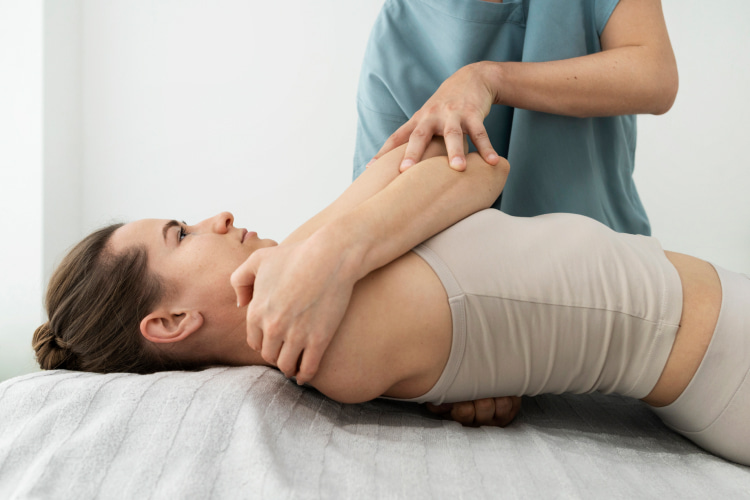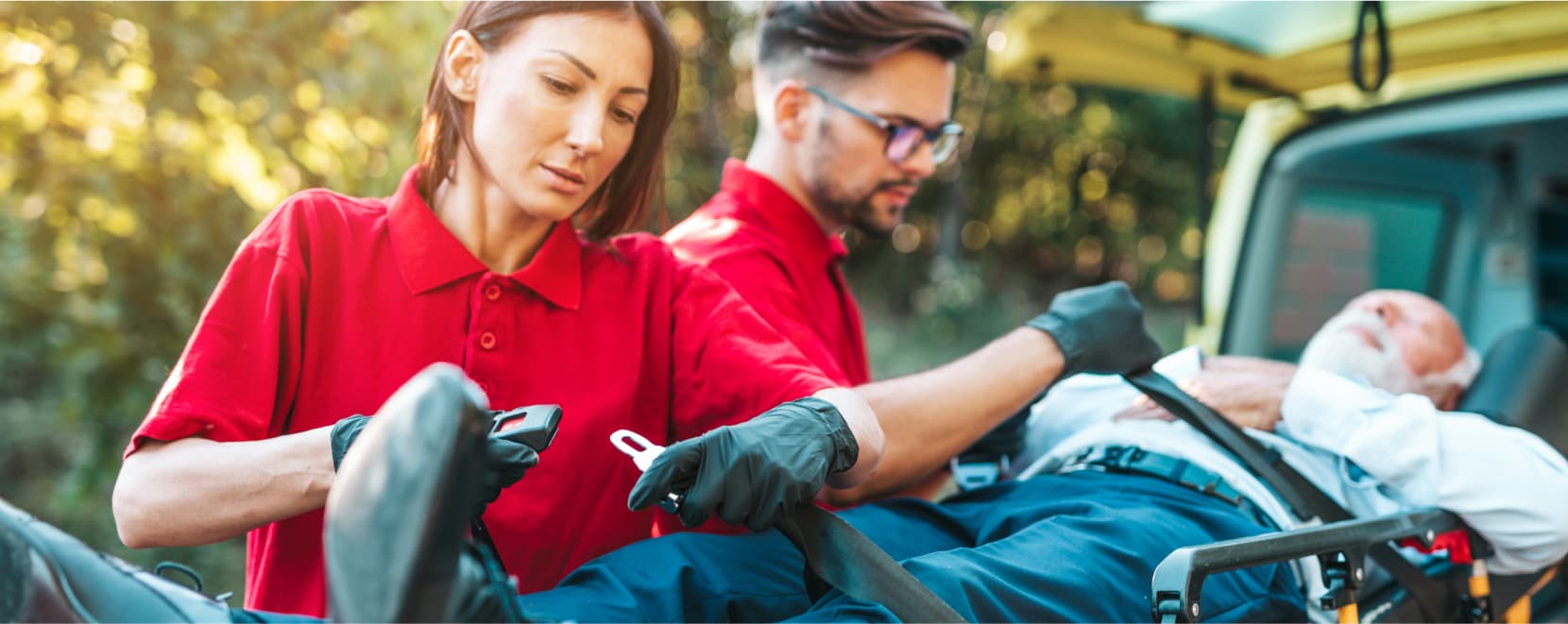Spinal stenosis is a common illness. It occurs when the spaces within the spine narrow. It results in pressure on the vertebral cord and nerves. This pressure can cause pain, numbness, and weakness in the arms, legs, and back. A variety of factors can cause vertebral constriction. They are age-related changes, herniated discs, and injuries.
Chiropractic care is a non-invasive and drug-free management approach. It can help ease the symptoms of the illness. Spinal stenosis chiropractors use manual corrections and other techniques to realign the spine. And it relieves pressure on the affected nerves.
This article will provide an overview of illness and its causes. We will also focus on the role of manual therapists in its management. We’ll also discuss:
- The effectiveness of therapy for vertebral constriction.
- Potential risks and benefits of chiropractic.
- What to expect during a spinal stenosis chiropractic appointment.
By reading this article, readers can better understand the illness and how manual therapy care can be a valuable management option.

Spinal Stenosis Symptoms
The most common symptoms include:
- Pain.
- Numbness.
- Weakness in the affected area.
In the lumbar region, symptoms that need stenosis chiropractic adjustment may include:
- Ache.
- Tingling.
- Weakness in the legs and buttocks.
In severe cases, there may be loss of bladder or bowel control. In the cervical region, signs may include:
- Pain.
- Weakness in the arms and hands.
Also, this causes a decrease in mobility and balance. It leads to an increased risk of falls.
The symptoms of vertebral constriction often develop gradually over time. And they may be worsened by activities that put pressure on the spine. Those are standing or walking for extended periods. Signs may also be relieved by sitting, lying down or stenosis chiropractic adjustments.
It’s important to note that not everyone with the illness will experience symptoms. Some individuals may have stenosis present in imaging studies. But they have no symptoms at all. This is called asymptomatic vertebral constriction and is common in older adults.
Can a Chiropractor Help with Spinal Stenosis?
Spinal stenosis chiropractic care can be a valuable option for individuals with vertebral constriction. Manual therapists use non-invasive, drug-free techniques. It realigns the spine and relieves pressure on the affected nerves. This can help reduce symptoms such as pain, numbness, and weakness.
Vertebral care involves the use of hands or a small instrument. Doctors apply controlled force to specific joints in the spine. By realigning these joints, stenosis chiropractors can help improve mobility.

Chiropractic Treatment for Spinal Stenosis
Management involves a range of techniques and approaches. They help manage symptoms and improve health. Doctors use non-invasive, drug-free techniques. They realign the spine and reduce pressure on the affected nerves.
Manual therapists may use other techniques, such as:
- Vertebral decompression.
- Soft tissue therapy.
- Exercise therapy to further ease symptoms and improve health.
Chiropractic treatment cannot cure spinal stenosis. But it helps manage symptoms and improves the quality of life. Management may be in conjunction with other means.
Remember that manual care should be customized to the individual’s specific case. Your doctor will conduct a thorough evaluation. It’s to determine the best approach for you.
Chiropractic Adjustments
Corrections are a key component of chiropractic treatment for spinal stenosis. They involve the use of hands or a small instrument. It’s to apply controlled force to specific joints in the spine. By realigning these joints, doctors can help improve mobility. And they reduce pressure on the nerves.
Spinal Decompression
Vertebral decompression is another chiropractic treatment for spinal stenosis. It involves the use of a traction table or other devices. It gently stretches the spine and relieves pressure on the nerves.
Soft Tissue Therapy
This chiropractic treatment for spinal stenosis may involve massage, stretching, etc. They’re to relieve muscle tension and improve flexibility.
Exercise Therapy
Exercise therapy is another option. A stenosis chiropractor may use specific exercises and stretches. They’re designed to strengthen the muscles supporting the spine and improve health.
What Is the Effectiveness of Manual Therapy?
Spinal stenosis chiropractic care cannot cure the illness. But it helps manage symptoms and improve quality of life, especially for individuals with this illness.
Research has shown manual therapy is an effective option for vertebral constriction. One study published in the Journal of Manipulative and Physiological Therapeutics found that individuals with lumbar vertebral constriction who received care significantly improved pain, disability, and walking distance compared to those who received a placebo.
It is important to note that care may not be appropriate for everyone. Your stenosis chiropractor will conduct a thorough evaluation. It’s to determine if care is a safe and effective option for you. Also, therapy must be in conjunction with other options, as a doctor recommends.
In summary, manual therapy is a valuable management option for individuals with an illness. Stenosis chiropractors use non-invasive, drug-free techniques. They realign the spine and relieve pressure on the affected nerves. It can help ease symptoms and improve health. If you are considering therapy, work with a qualified specialist. And discuss your options with your healthcare provider.
What Should People with Vertebral Constriction Avoid?
To manage this illness, there are certain activities people should avoid:
- Firstly, individuals should avoid high-impact activities such as running or jumping. These activities can cause further compression. This worsens the illness. Instead, low-impact exercises such as walking or swimming can be helpful. They maintain mobility and reduce pain.
- Also, individuals should avoid heavy lifting or bending at the waist. These actions can put extra stress on the back. It is important to maintain proper posture. And use ergonomic tools and equipment to reduce strain on the back.
- Finally, opioids and muscle relaxants should also be avoided. They can have negative side effects and can be addictive.
What to Do if I Feel Symptoms?
If you are experiencing symptoms, contact us for stenosis chiropractic adjustment. Your healthcare provider may order imaging studies like an X-ray or MRI. It’s to confirm the diagnosis and determine the extent of the stenosis.
Management for vertebral constriction may include:
- Medication to manage pain and inflammation.
- Physical therapy to improve strength and flexibility.
- Surgery in severe cases.
Spinal stenosis chiropractic care can also be a valuable management option. Manual therapists can use manual corrections and other techniques to realign the spine. This way, you can relieve pressure on the affected nerves.
Conclusion
In summary, the illness can cause a range of symptoms. They are pain, numbness, and weakness in the affected area. If you are experiencing these symptoms, seek medical attention. It’s to confirm the diagnosis and determine your best approach.
FAQ
Can a chiropractor help spinal nerve damage?
Chiropractors can help ease symptoms associated with spinal nerve damage. It works by realigning the spine and reducing pressure on the affected nerves. But the extent of the nerve damage and its underlying cause should be evaluated. It’s to determine the most appropriate treatment plan.
Can a chiropractor realign your spine?
Yes, they use adjustments, spinal decompression, and soft tissue therapy techniques. But it is important to work with a qualified chiropractor. And discuss your treatment options with your healthcare provider. It will determine if chiropractic care is appropriate for your case.
What is the best treatment for spinal stenosis?
The best treatment depends on the individual case and the severity of the condition. Conservative treatments such as chiropractic care, physical therapy, and medication may be effective. In more severe cases, surgery may be necessary. Working with a healthcare provider to find the most appropriate treatment plan is vital.
How many chiropractic sessions do I need for spinal stenosis?
The number of chiropractic sessions needed for spinal stenosis may vary. It depends on the severity of the condition. A chiropractor will create a personalized treatment plan based on the patient’s needs.
Is chiropractic care safe for people with spinal stenosis?
Chiropractic care is generally safe for people with spinal stenosis. But the chiropractor should be aware of the condition. And they should avoid any techniques or movements that could exacerbate the symptoms.
What chiropractic techniques are good for spinal stenosis?
Chiropractic techniques for spinal stenosis may include:
Spinal adjustments.
Decompression therapy.
Exercises to improve spinal flexibility and strength.





I’ve been avoiding high-impact activities and heavy lifting due to my spinal stenosis, but I didn’t know that low-impact exercises like walking or swimming could be beneficial. Thanks for the helpful information and suggestions on how to manage this condition!